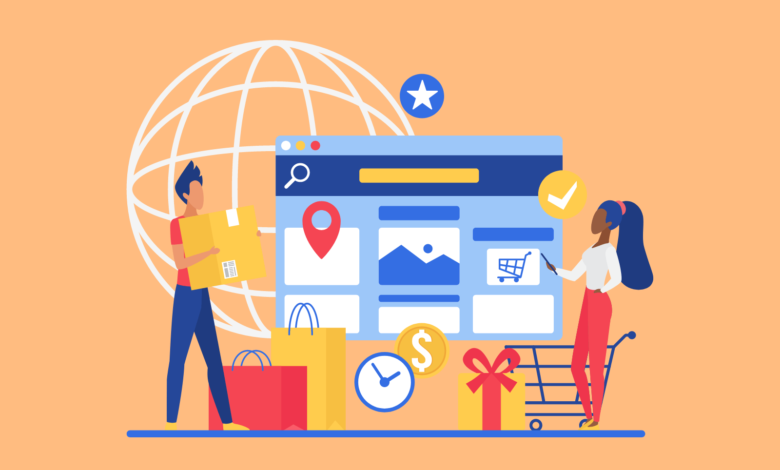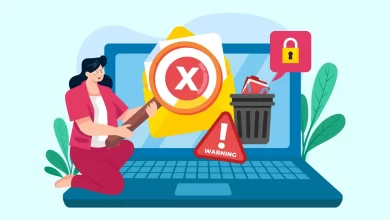The Complete Guide to Creating a Shopify Marketing Strategy

Imagine making $100,000 in sales in just one day — tech retailer Refurb.io made it happen on their Shopify store. You can find thousands of success stories from ecommerce brands on Shopify, but they all have one thing in common:
They have killer marketing strategies.
And if you don’t? Nobody will find or buy from your Shopify store. We don’t want that.
That’s why we put together this updated guide on the components of an effective Shopify marketing strategy. We’ll cover budgeting and branding, channels, affiliate marketing tactics, and more to supercharge your Shopify store’s revenue.
What is a Marketing Strategy?
A marketing strategy is a long-term plan that details the timelines, budgets, and tactics a brand will use to achieve its business goals.
Of course, marketing covers multiple mediums and channels — so a strategy might include details for influencer, social media, paid, affiliate, and content marketing.
All marketing strategies document a brand’s target audience and the most effective channels and formats to reach and engage them. They also include budgets for things like labor and staff or software for specific tactics. One example would be affiliate tracking software like Tapfiliate, which tracks website traffic and conversions that stem from a brand’s affiliate partners.
Let’s break down some of these elements in greater detail as they pertain to ecommerce businesses.
What to Think About When You Create a Marketing Strategy for Your Shopify Store
Selling online has its quirks. Sure, you can sell to international audiences — but you also have to be visible to those audiences. Digital marketing strategies help put your Shopify store on the radar of your potential customers and drive sales.
Here are some elements to consider before diving into your strategy and actions:
Target Audience
Your target audience is people and potential customers you want to reach with your marketing materials. These are your ideal customers, as defined by:
- Demographics: This might include age, gender, parental or marital status, ethnicity, or even employment details.
- Buying patterns: You might look at the purchase history from your existing customers to assess the buying patterns of your target audience. For example, what do they buy? How much do they typically spend on an order, and how frequently do they make purchases?
- Hobbies and interests: Technology, books, sports, fashion, movies, and health are some examples.
- Income: What is the general income bracket of your target audience? This helps you figure out if you’re marketing to people who can afford your products.
But how do you learn all this about your audience?
Where to find audience data
Start with your existing customers. You can send them surveys to learn more about them and their customer experience. Shopify Analytics also gathers data on the people who shop from you and generates reports that show details like:
- Average order spend
- Predicted purchase tier or value
- Returning customers
- Customers by location
- Name and contact information
You can also use analytics from other digital channels to learn about audience demographics and interests, like:
- Google Analytics
- Facebook Analytics
- Tapfiliate Reporting Dashboards
- Instagram Analytics
Pro tip: Once you collect enough details about your target audience, create an audience persona document to include in your marketing strategy. HubSpot shares some great examples here.
Unique Selling Proposition (USP)
Let’s say you sell athletic footwear on your Shopify store. But here’s the thing: so do Allbirds, Steve Madden, Frye, and probably a thousand other businesses with Shopify stores.
That’s where your USP comes in handy. It essentially differentiates your products from the competition. And your USP will be the star of all your marketing materials to convert your audience.
What is your USP? Find out by determining:
- Your customers’ pain points
- Your product’s unique ingredients
- Differentiators in your business model or manufacturing process
- Data or tests that speak to your product quality
- Pricing differences between your product and competitors’
Here are some examples from some of Tapfiliate’s ecommerce clients:
MDHearingAid: This company sells medical-grade hearing aids at the most competitive pricing. Additionally, they help customers find the right solution with personalized consultations with on-staff audiologists.


GymShark: Performance-backed fitness apparel with stylish designs at a more affordable price compared to competitors with apparel at a similar quality.


Your marketing strategy will include tactics to promote your UVPs to your customers. These might look like:
- Product demos from influencer affiliate marketers
- Branded YouTube tutorials comparing your product with competitors
- Bullet-form UVPs in social media post infographics
We’ll get into marketing strategies in more detail later in the article. Before you launch any strategy, you still need the rest of your marketing foundation.
Brand Identity
Your brand is the personification of your products — the energy, values, and voice convince your customers to keep coming back. But, most importantly, brands encourage trust in ecommerce offerings. You’re more likely to trust Nike to sell you the same reliable running shoes than a company with no logo, tagline, or personality.
Your marketing strategy should have a section that describes how you’ll maintain branded content cohesion. You might include branded elements like:
- Colors: Pick 2-3 colors that set the stage for your brand.
- Logo: Add logos as watermarks to all social media assets and share them with your marketing team and affiliates.
- Voice: Establish clear guidelines on how your brand voice will sound in marketing materials, including vocabulary, tone, and style.
Goals and Objectives
Every Shopify store wants to see more push notifications for transactions and purchases, right? That’s a broad, universal goal — but not specific enough for an effective marketing strategy.
Our advice? Set SMART (Specific, Measurable, Achievable, Relevant, and Time-bound) marketing goals relevant to your Shopify store’s key business objectives.
Here are a few examples:
- Decrease cart abandonment rate by 50% after one year with automated email campaigns.
- Improve conversion rate by 75% in six months with weekly affiliate campaigns and social media promotion
- Increase customer average order value (AOV) by 25% in one year with affiliate coupon codes.
Budget
BigCommerce recommends setting aside between 7% to 12% of your total revenue to marketing.
So. if your annual revenue is 250,000, you’ll want to allocate between $17,500 to $30,000 on marketing. If your revenue is $100,000, your marketing budget might look like $7,000 to $12,000.
Your Shopify strategy should outline how much of your marketing budget goes to each tactic (more on those later).
If you have a tighter budget, focus on strategies that don’t require significant ongoing costs. For example, affiliate marketing only costs you a commission for each sale, meaning you don’t pay until you see some revenue. Similarly, organic social media and SEO tactics cost only the time needed to maintain them.
Paid tactics like social media advertising and Google PPC ads will run you higher costs daily since you have to pay for every click your ad receives.
Our advice? Test out each tactic for a short period to see which ones bring you the most return on investment (ROI). Then, you can allocate more of your budget to the most effective channels and strategies.
Channels
Where does your audience hang out online? Conduct some research to find out and start promoting your Shopify store on those channels. You might explore:
- Social media: An active presence can build brand awareness across relevant target audiences. You might look to TikTok for Gen Z audiences or Facebook for audiences across a broader range of ages.
- Email: Newsletters and promotional emails can increase traffic to your online store.
- SEO: This is website and blog content that speaks to your target audience’s most popular search queries on search engines like Google and Bing.
Metrics and Analysis
Shopify stores need eyes on key performance indicators (KPIs) and metrics to assess performance, like:
- Cart abandonment rate: How often customers “add to cart” without completing the transaction.
- Conversion rate: How often a potential customer makes a purchase compared to the ones that only click on your product.
- Customer lifetime value (CLV): The total monetary value of a customer throughout their lifetime interactions with your brand.
- Referral rate: How often customers make a purchase after being referred.
- Average order value (AOV): How much a customer spends on average per purchase


Pro tip: Look at metrics over time and assess any changes in relation to your overall marketing strategy.
Notice higher conversion rates and AOVs after recruiting a particular affiliate? You’ll want to invest more in that relationship. Or on the other hand, if you notice higher cart abandonment rates after increasing your prices, that might be worth looking into as well.
8 Strategies to Market Your Shopify Store
Craving more traffic to your Shopify store? We’ve got you covered with eight different marketing tactics to include in your strategy.
Affiliate Marketing
Affiliate marketing is a model where brands pay affiliate partners a commission (either a flat fee or percentage-based) for every sale or lead the affiliate brings to the brand.
For example, let’s say an influencer affiliate demos your product on their Instagram story. If a member of their audience clicks on their link to purchase your product for $40, and the affiliate commission is 10%, you’d give that affiliate $4.
While you don’t have to invest capital in affiliate marketing off the bat, you do need to take some time to establish your Shopify affiliate program. This looks like:
- Recruiting affiliates: Look at competitors, social media influencers, or reputable publishers in your industry to find potential affiliates to reach out to. Or, offer incentives to your customers through a referral program to leverage their networks for future online sales.
- Tracking performance: Notice how many clicks and conversions you garner through your affiliates. Assess important metrics like conversion rate, clickthrough rate, and total value of affiliate sales per affiliate with Tapfiliate’s reporting features.
- Engaging affiliates: Working solely off commissions, affiliates aren’t paid for all the time they put into promoting partner products. That’s why brands must engage them as much as possible to keep them happy and bringing you more leads. You can engage affiliates with performance increases, flexible commissions, regular communication, and shared social media assets to save them time in their workflows.
The best way to launch and manage an effective affiliate marketing strategy? The right affiliate tracking system. Try Tapfiliate today!
Referral Marketing
Referral marketing offers incentives to current customers who refer new customers to your brand. It sounds similar to affiliate marketing, right? That’s because the concept is identical, though some online businesses might be more selective in affiliate partners than referral partners.
For example, you might offer a free month of your subscription service to a referral partner and only offer monetary commissions to affiliates with strong reputations in your industry.
Still, your customer base is a great pool of potential marketing for your products or services. That’s why Tapfiliate offers an automated customer referral program to the brands who use our software. Every time a customer completes a purchase (or 2, or 10, etc.), you can trigger an automatic email invitation to that customer to join your referral or loyalty programs. Feel free to customize the email to be personalized or offer various incentives depending on the customer.
Plus, our reporting dashboards help you assess relevant metrics like referral rate and conversion rate to evaluate performance.
Pro tip: Make your referral program easily accessible on your website and promote it on your social media channels. We recommend promoting it on a regular basis within your marketing calendar so even new audiences become aware.


Influencer Marketing
Almost 60% of ecommerce brands saw more sales from social media in 2023 compared to 2022. Meaning? Customers love shopping mid-scroll, but it’s not always those pricey ads that convert them. Influencers have turned a new page in the ecommerce marketing playbook, now a trusted source for potential customers considering a purchase.
Influencers are people who have an impact on your target audience — even if it’s only a tiny portion of that audience. For example, Hubspot and Influence Marketing Hub report that about 44% of brands prefer micro-influencers with smaller followings because they’re cheaper to work with than massive, celebrity influencers (who might charge thousands of dollars to post about your product).
But engaging influencers aren’t just in the fashion niche — you might find nerdy influencers promoting their favorite software on YouTube:


Or lifestyle influencers promoting Amazon home finds:


Since influencer marketing relies so heavily on social media, it helps to have branded templates and assets to share with influencer affiliates.
Tapfiliate lets you create and share banners and templates for popular channels like TikTok and Instagram with influencers to promote your products and propel brand recognition.
Email Marketing
What’s the first thing you do after a cup of coffee?
Maybe it’s a quick Instagram scroll — but if you’re on your computer or at the office, chances are it’s a daily email browse.
HubSpot shared that 99% of active email users check their inbox daily, and ecommerce brands have even more opportunities to engage with audiences through email.
Here are some examples:
- First-time customers: You might send an email to customers on their first purchase thanking them and offering them a discount for next time.
- Order confirmation: Your customer might want to track their purchase, and your email confirmation helps them do so. Plus, you can include some similar product showcases at the bottom and links to your website to encourage more browsing.
- Abandoned cart: The bane of every ecommerce marketer’s existence is the dreaded abandoned cart — but email marketing helps you seal the deal with a little reminder. “Forgot something in your cart?” Sometimes, that’s all a customer needs to move forward with a purchase. You might even add exclusive discounts to your abandoned cart email, like a 10% discount, to encourage a buy.
- Customer feedback: It’s been a month since your customer purchased a product from your Shopify store — did they enjoy it? Use email marketing to garner critical customer feedback about your products to improve and potentially sell even more.
- Marketing newsletter: Want to spread the word about new product launches? Having a blow-out sale? These are great tidbits of information for your email newsletter. Ensure you include striking visuals of your product and plenty of persuasive calls to action (CTAs) in your marketing emails.
- Holiday shopping season: Take advantage of holidays to encourage more customer spending with email campaigns for seasonal sales.
Tapfiliate merges email and affiliate marketing with its direct integration with Mailchimp. You might keep track of potential leads and trigger automated email newsletters or exclusive offers to their inbox.
Social Media Marketing
Did you know you can sell your ecommerce store’s products directly on certain social media channels, like Instagram? While social commerce platforms are becoming more effective, so are organic strategies to promote your Shopify store on your social channels.
You’ll need to build a strong following and engage your audience with relevant, high-quality content that speaks to their appeals and pain points.
GymShark promotes diverse models on its Instagram channel to speak to its diverse clientele. But more than that, the company shows its audience how they too can look and feel working out with their apparel:


Paid Ads
Paid ads are available on search engines like Google and Bing, as well as social media channels like Instagram and Facebook. Google Ads offers a subset of advertising known as Shopping Ads — a must for ecommerce businesses because the format resembles the experience of shopping in-store.
Audiences can see detailed product descriptions, along with important details like specs, colors, ratings, product images, and pricing:


Most paid ad campaigns have similar structures, where you need to decide on:
- Audience targeting: Target based on location, online history, demographics, job title, and interests, depending on the ad platform.
- Location: Target by city, region, or broader.
- Bidding strategy: Bid on keywords that dictate which search queries your ad appears on, and decide on manual bidding or automated strategies.
- Daily budget: How much you’re willing to spend per day (you pay for every click your ad brings to your website)
Keep in mind that while paid ads can get you in front of your audience quickly, you’ll pay a pretty JHN Reader for them.
Pro tip: Always A/B test different campaign elements like location targets and bidding strategy, or even ad copy, to determine what’s most effective before you invest more of your budget.
Content Marketing
Content marketing isn’t as sales-y as your average Instagram ad or landing page. Instead, content gives your audience valuable, insightful, and relevant information about niche topics they might casually look for on search engines like Google.
Keyword research is a must for content marketing, as it tells you what your audience types into Google. Then, you can create content around those keywords and plan a content calendar accordingly to generate more traffic to your website. This is known as search engine optimization (SEO).
For example, online style powerhouse Fashion Nova has an active blog of articles that speak to common style questions typed into Google:


And if you click on one of those articles, you’ll find relevant content to the audience’s query — a guide on how to apply boob tape.
But towards the end, Fashion Nova takes the opportunity to invite readers to purchase their strapless products that they can now enjoy with this new knowledge:


Pro tip: Always repurpose content to show valuable insights in multiple formats to engage more audiences.
For example, Fashion Nova could repurpose the above article into a 5-step infographic with high-quality images for Instagram, or demonstrations of how to use a product in video content.
Customer Reviews and Testimonials
Guess how many online stores are hosted on Shopify? 4.4 million — yeesh. We can bet that you’d have a minimum of 5-10 potential competitors, if not many more, vying for your audiences’ attention.
So, how do you set yourself apart? Credibility from customer reviews and testimonials. These are documented experiences of your products from the people who buy them. They help your prospects visualize the benefits they’ll experience after buying.
Here are some ecommerce best practices to garner reviews:
- Offer a discount: Offer a 10% discount in exchange for the time it takes a customer to write a review.
- Respond to negative reviews: No brand is perfect, but that doesn’t mean a negative review should get the last word. Publicly offer a solution to rebuild trust in your Shopify store.
- Automate review requests: Use automation software like Zapier and Mailchimp to automatically send out requests for testimonials at key stages in the customer marketing funnel, like three days after a purchase, repeat purchase, etc.
Start Marketing Your Shopify Store Today
The ecommerce game is a competitive one, but your Shopify store can secure the customers and revenues you crave with a clear marketing strategy. Take time to test out different tactics and gather data about your performance to allocate funds to the most effective strategies.
Here’s a quick recap of Shopify marketing stats and actions to take now:
- Establish measurable business goals and determine metrics to assess performance.
- Use a content calendar to keep different campaigns and social media posts organized.
- Gather Shopify analytics and purchase data to understand your customers more.
- Research potential affiliates and influencers with competitive analysis, industry research, and social media listening.
- Leverage email marketing at every stage of the customer journey.
- Recruit past and repeat customers as referral partners.
We know your Shopify store is the bee’s knees, but it’s time for your customers to know, too. Let’s put your online store on their radar with affiliate marketing.
Explore Tapfiliate with a free 14-day trial now!



